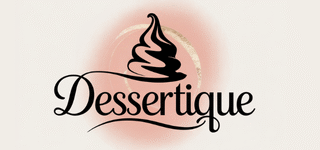The Sweet History No One Tells You About
I’ve been obsessed with macarons for almost a decade now, ever since my first trip to Paris back in 2014. Standing in line at Ladurée on the Champs-Élysées, I remember feeling like I was about to taste something truly special. Little did I know that those colorful little cookies would become such a big part of my life! i spent years perfecting my own macaron recipe (with plenty of disasters along the way, trust me). The journey has been filled with sticky meringue, cracked shells, and more than a few tears—but I wouldnt trade it for anything.
Most people know the basics about macarons—theyre colorful French sandwich cookies made with almond flour, egg whites, and sugar, with a ganache or buttercream filling. But there’s SO much more to these little treats than meets the eye. Let’s dive into some seriously interesting macaron facts that’ll make you look at these delicate cookies differently.
1. Macarons Weren’t Actually Created in France
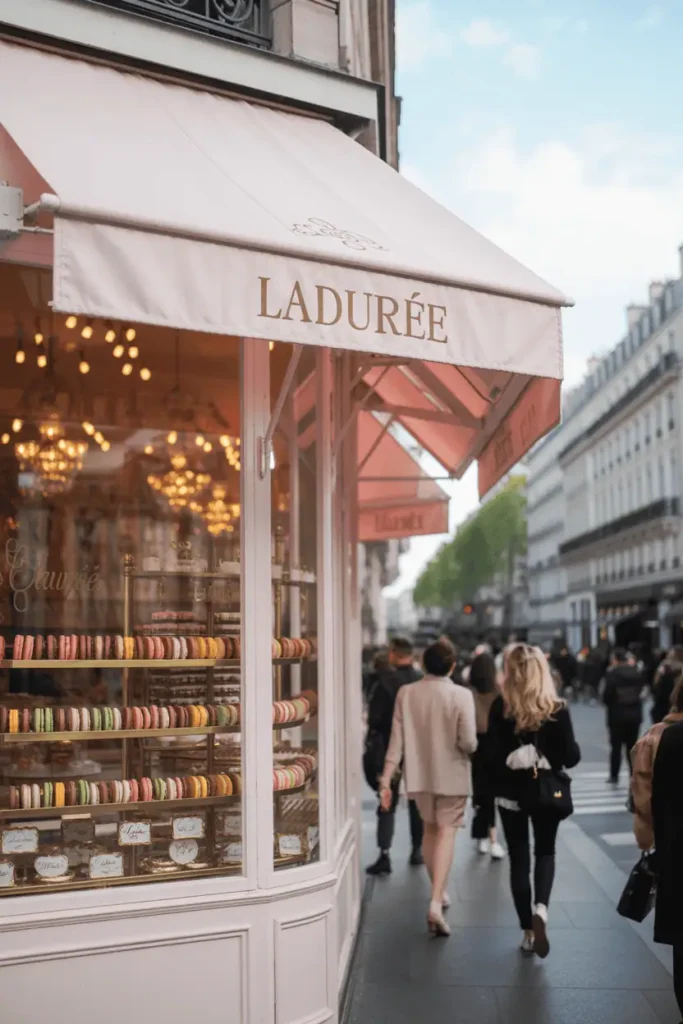
Plot twist! Despite being known worldwide as the quintessential French pastry, macarons didn’t actually originate in France. The original macaron was brought to France from Italy in the 16th century, thanks to Catherine de’ Medici’s Italian pastry chefs when she married Henry II of France.
These original cookies were plain almond cookies—nothing like the sandwich style we know today. They were basically just almond cookies that were crunchy on the outside and soft on the inside. No filling, no fancy colors, no Instagram potential whatsoever!
The sandwich-style macaron we know and love today wasn’t created until the early 20th century when Pierre Desfontaines of the French patisserie Ladurée had the brilliant idea to stick two macaron shells together with ganache. THANK YOU, PIERRE!! 🙌
I remember trying to explain this to my French host mom during my study abroad semester, and she got so offended lol. She insisted that macarons were 100% French and I had my facts wrong. I didn’t have the heart to argue with her, especially since she was feeding me amazing home-cooked meals every night. Sometimes you just gotta let people believe what they wanna believe, ya know?
2. There’s a Secret Technique Called “Macaronage”
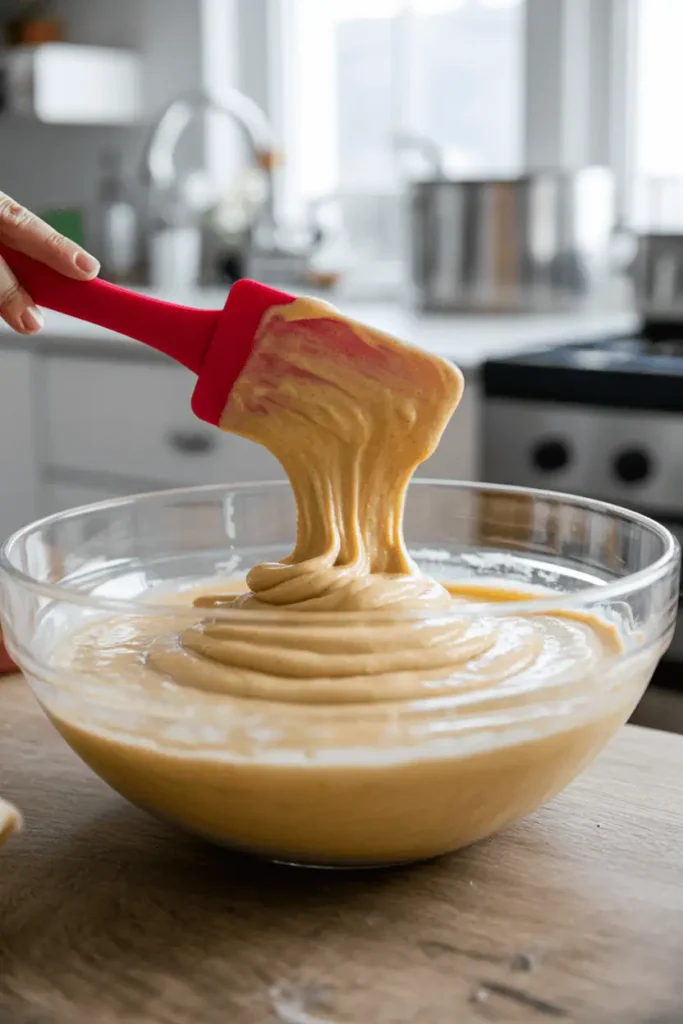
One of the most crucial steps in making macarons is something called “macaronage.” It’s the technique of folding the dry ingredients into the meringue until you reach the perfect consistency. And let me tell you, this step can make or break your macarons.
I learned this the hard way. My first dozen attempts at making macarons were complete disasters bcuz I either undermixed (resulting in pointy, nipple-topped shells) or overmixed (creating flat, cracked pancakes). The perfect macaronage produces a batter that flows like “lava” or “molten ribbon.” When you lift your spatula, the batter should fall back into the bowl in a ribbon that disappears back into the rest of the batter within about 30 seconds.
Here’s my personal technique that FINALLY worked after many, many failures:
- Count your folds (I usually need between 65-75 folds depending on the humidity) 2 Fold by scraping around the bowl and then cutting through the middle
- Test the batter every few folds once you get close
- Stop the SECOND you reach the right consistency
Professionals can feel when the batter is ready, but for us regular folks, it takes practice. I’ve definitely cried over macaron batter before. Not ashamed to admit it! The first time I got it right, my husband thought I’d won the lottery from how loud I was screaming with excitement.
3. Macarons Have There Own National Day
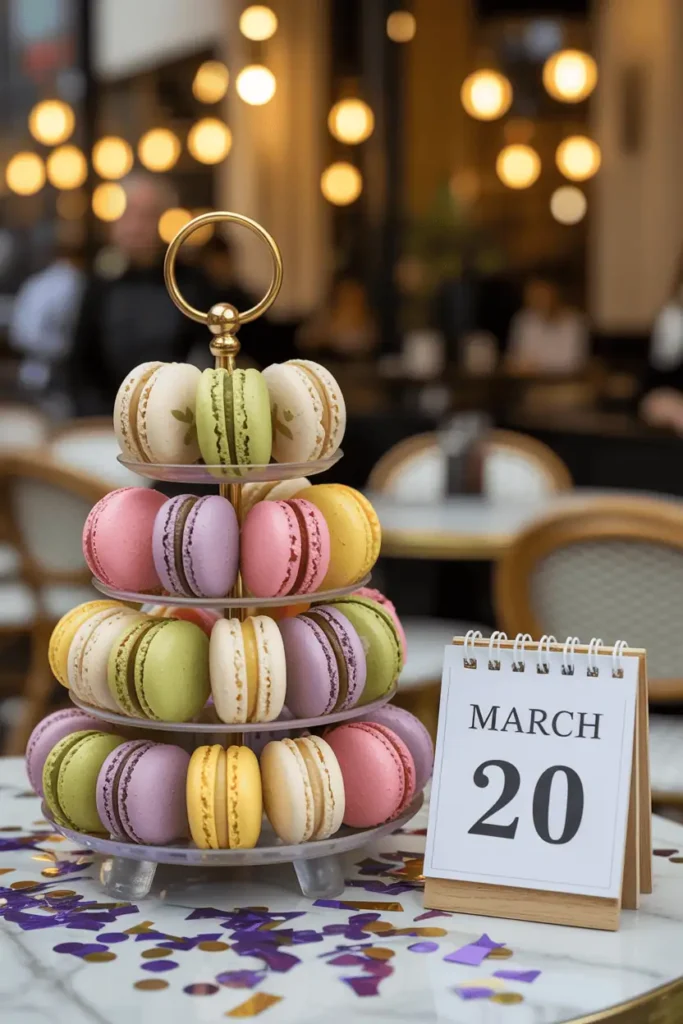
Thats right—March 20th is National Macaron Day! It was started by Pierre Hermé, one of the most famous macaron makers in the world (some call him the “Picasso of Pastry”). The day coincides with the first day of spring in France and many patisseries offer free macarons or special flavors on this day.
I’ve actually planned vacations around this day. In 2019, I specifically booked my Paris trip to include March 20th, and I went to SEVEN different patisseries in one day to collect free macarons. My stomach definately regretted it later, but my taste buds were in heaven! The best one I had was a olive oil and vanilla macaron from a tiny shop in the Marais district. Sounds weird, but it was INCREDIBLE.
If your wondering whether the US celebrates National Macaron Day too—yes, many American bakeries have adopted the tradition! It’s a great opportunity to try these treats if you’ve never had them before. Some bakeries even donate a portion of their proceeds to charity on this day, so you can indulge guilt-free.
4. The Perfect Macaron Has “Feet”
When I tell people this, they always give me the strangest looks. But it’s true! Professional bakers judge macarons partly by their “feet”—the ruffled, airy edge at the bottom of each cookie shell. No feet means somethings gone wrong.
Getting those perfect feet requires several factors to align:
- Properly beaten egg whites (stiff peaks but not over-beaten)
- Correct macaronage technique
- Adequate resting time before baking (usually 30-60 mins)
- The right oven temperature
My kitchen has uneven heat spots in the oven (so annoying!!), so I’ve learned to rotate my baking sheets halfway through cooking. Before I figured this out, I’d end up with half my batch having beautiful feet and the other half looking sad and flat. I hate when that happens.
One time I was making macarons for my sisters baby shower, and I was so nervous about getting them perfect that I did a test batch the day before. Thank goodness I did, because my oven was acting up and I had to adjust the temperature down by 15 degrees to get consistent feet. The baby shower macarons turned out amazing—little blue shells with tiny white baby footprints piped on top. Everyone thought I’d ordered them from a fancy bakery, which made me feel kinda proud tbh.
5. Macarons Can Have Extraordinary Flavors
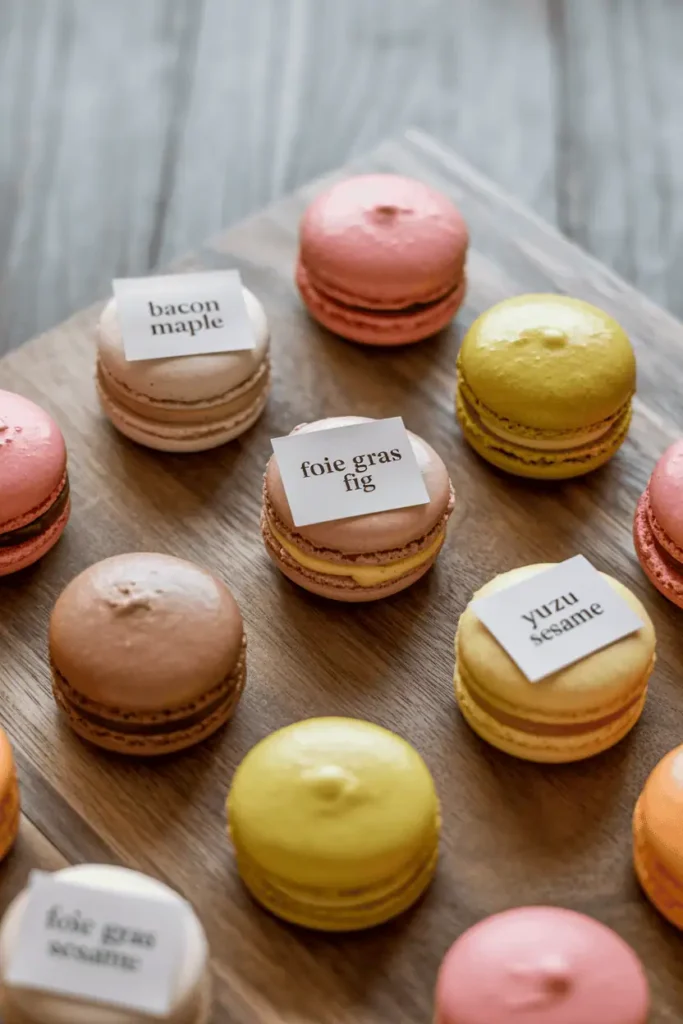
While vanilla, chocolate, and raspberry are classic macaron flavors, modern patisseries are pushing the envelope with some truly wild combinations. I’ve personally tried:
- Foie gras and fig (surprisingly delicious)
- Black sesame and yuzu (my absolute fave)
- Wasabi and white chocolate (better than it sounds!)
- Balsamic vinegar and strawberry (mind-blowing)
- Bacon maple (perfect breakfast macaron)
The strangest one I ever attempted at home was a blue cheese and pear macaron. My husband HATES blue cheese, so I was basically making them just for myself. The filling was a white chocolate ganache infused with blue cheese and a bit of pear compote in the center. They were… intense. But paired with a glass of dessert wine? OMG. Heaven.
The weirdest commercial flavor I’ve ever encountered was at a boutique patisserie in Tokyo—it was a “sushi macaron” with wasabi ganache and a thin slice of raw salmon on top. i couldnt bring myself to try that one. There are limits, even for me!
The Science Behind Perfect Macarons
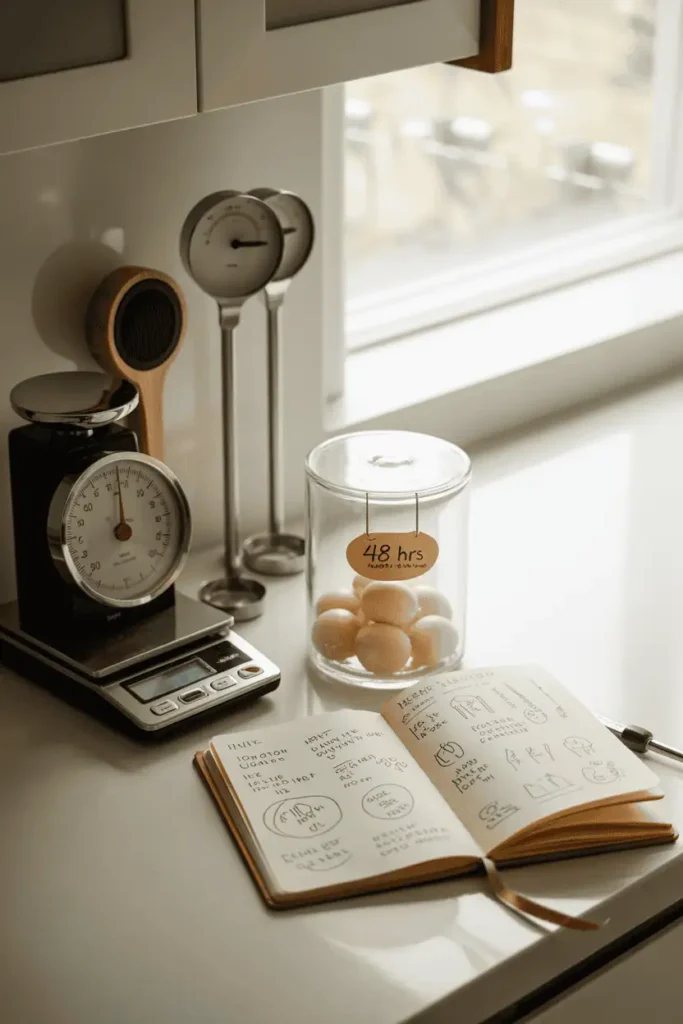
Something most people dont realize is that macarons are actually incredibly scientific. Humidity, temperature, ingredient temperature, and even the age of your egg whites can dramatically affect your results.
For years, I couldn’t figure out why my macarons would work perfectly one day and fail miserably the next. Then I bought a kitchen thermometer and hygrometer (which measures humidity) and started keeping a “macaron journal.” Such a game-changer! I discovered that my success rate plummeted when humidity was above 60%.
Here’s my scientific approach that finally led to consistent results:
- Age egg whites for 24-48 hours in the fridge (covered with plastic wrap with tiny holes poked in it)
- Bring all ingredients to room temperature before starting
- Measure everything with a digital scale (volume measurements are WAY too inconsistent)
- Check room humidity (if it’s above 65%, I don’t even bother or I use the oven-door-crack method)
- Use an oven thermometer (most ovens are off by at least 25 degrees!)
Once I started treating macaron-making like a science experiment rather than just following a recipe, my success rate went from about 40% to nearly 90%. Still not perfect, but WAY better!
Common Macaron Mistakes (That I’ve Made So You Don’t Have To)
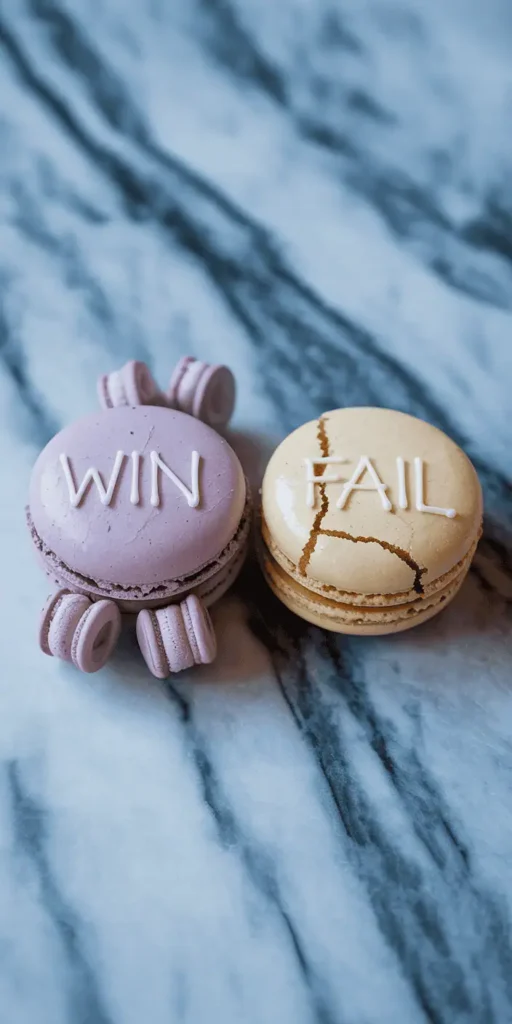
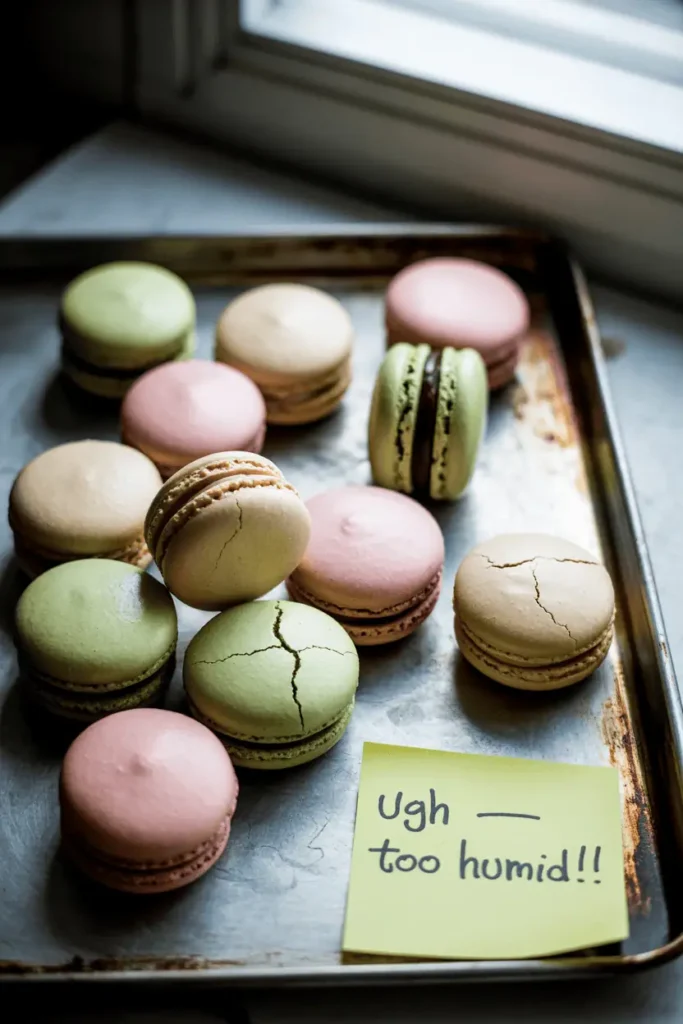
Let me share some of my most epic macaron failures so you can avoid them:
The time I substituted regular flour for almond flour bcuz I ran out—DISASTER. You absolutely cannot make this substitution. The cookies spread into one giant, flat pancake. Almond flour isn’t just a flavor thing; its fat content and protein structure are essential to macaron science.
Using egg whites from the carton instead of separating my own eggs. The stabilizers in the carton whites prevented them from whipping properly, and I ended up with sad, flat discs. I was so mad at myself since I’d just spent like $15 on fancy chocolate for the filling.
Adding liquid food coloring instead of gel or powder. The extra moisture completely threw off the batter consistency. those macarons never developed feet and were sticky and gross. Gel or powder colorings are the only way to go!
Trying to make macarons during a summer thunderstorm. The high humidity made it impossible for the shells to dry properly before baking. I waited THREE HOURS for them to form a skin, and they still failed. I should’ve just given up but I’m stubborn like that.
One time I got distracted by a phone call and forgot the macarons in the oven for an extra 5 minutes. They weren’t just browned—they were practically charcoal! My smoke detector went off and everything. The worst part was that Id used the last of my almond flour, so I couldn’t even try again that day.
Are Macarons Worth the Effort?
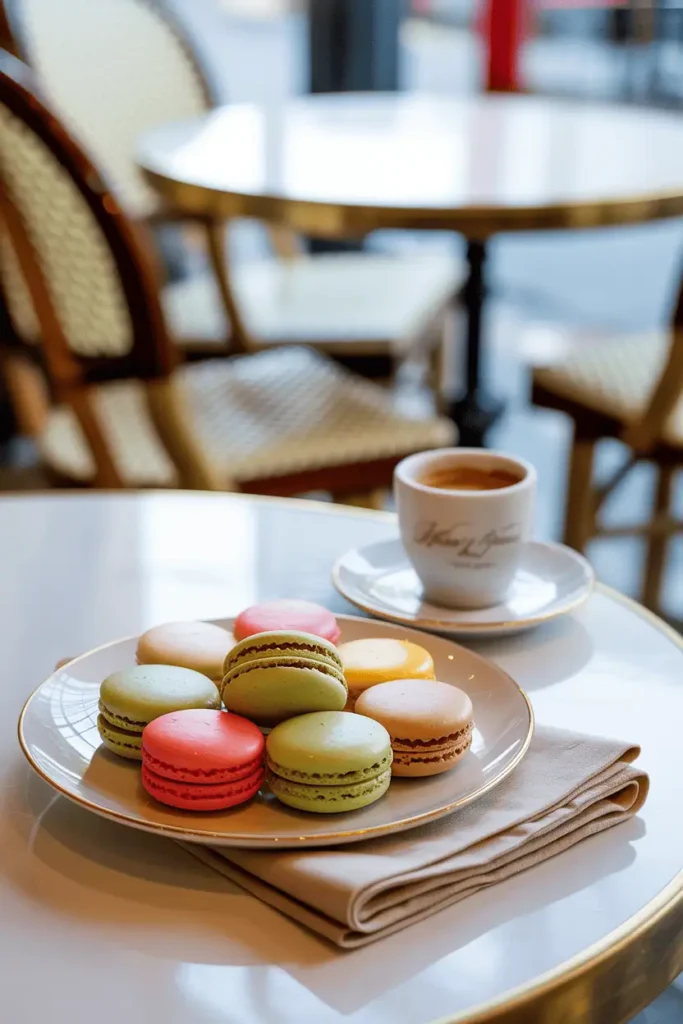
After everything I’ve shared about how finicky and scientific macarons are, you might be wondering if they’re worth the trouble. My honest answer? ABSOLUTELY.
There’s something magical about pulling a perfect batch of macarons out of the oven—smooth tops, frilly feet, vibrant colors. its like a kitchen victory that feels more satisfying than almost any other baking achievement. Plus, the look on peoples faces when you show up with homemade macarons is priceless. instant baking cred!!
If your willing to embrace the learning curve and accept that you’ll prob have some failures along the way, making macarons can be incredibly rewarding. And once you master the basic technique, you can experiment with endless flavor combinations and decorations.
I’ve turned my macaron obsession into a small side business, selling holiday-themed macaron boxes to friends and coworkers. Nothing huge, but enough to fund my baking habit and nice ingredients. Last Christmas, I made snowflake-decorated peppermint macarons that sold out in hours. it’s been such a fun creative outlet!
Final Thoughts: Embrace the Macaron Journey

Whether you’re a macaron novice or a seasoned pro, I hope these fun facts have given you a deeper appreciation for these delicate delights. They may be trendy and photogenic, but macarons also represent centuries of pastry tradition, scientific precision, and culinary creativity.
If you’ve never tried making them yourself, I encourage you to give it a go! Yes, theyll probably crack or fail in some way the first few times, but that’s part of the journey. Each batch teaches you something new, and when you finally achieve that perfect macaron—smooth top, frilly feet, chewy interior—the feeling is absolutely worth all the failed attempts.
And if baking isnt your thing, treat yourself to macarons from a quality patisserie. Try unusual flavors, compare different bakeries’ styles, and appreciate the craftsmanship that goes into each tiny, perfect bite.
Btw, I almost forgot to mention—macarons actually freeze REALLY well! If you buy or make too many (is there such a thing?), just pop them in an airtight container in the freezer. They’ll keep for up to 3 months. Just let them thaw in the container at room temp for about 20 minutes before eating. This is such a lifesaver when you need a fancy dessert for unexpected guests… just pull some frozen macarons out and everyone thinks you’re a culinary genius! I always keep a stash of my fave flavors hidden in the back of the freezer—my emergency macaron supply. My husband knows that if they mysteriously “disappear,” he’s in big trouble 😂. Also, another random tip—macarons actually taste better on day 2 or 3 after making them! The filling has time to soften the shells slightly, creating that perfect texture. So don’t stress about making them the day you need them!
